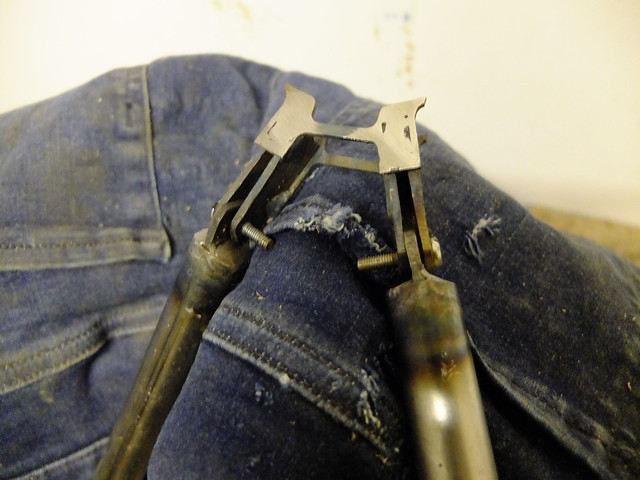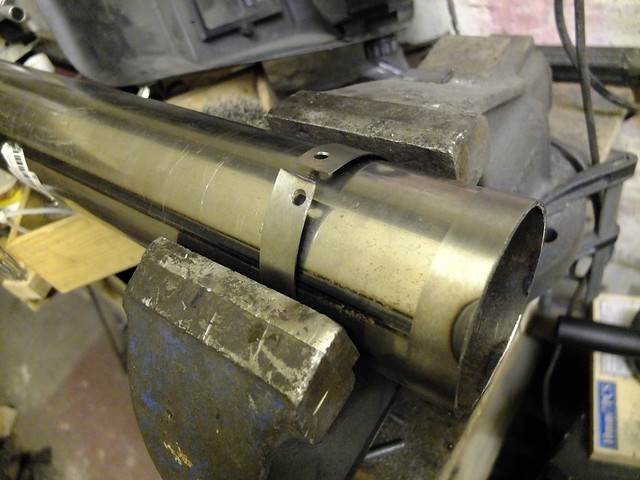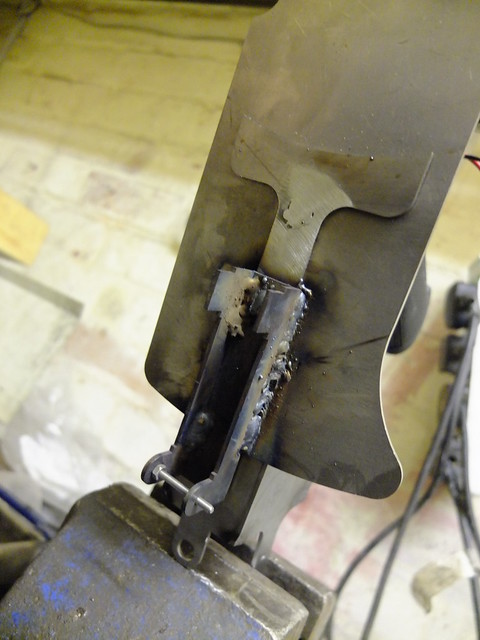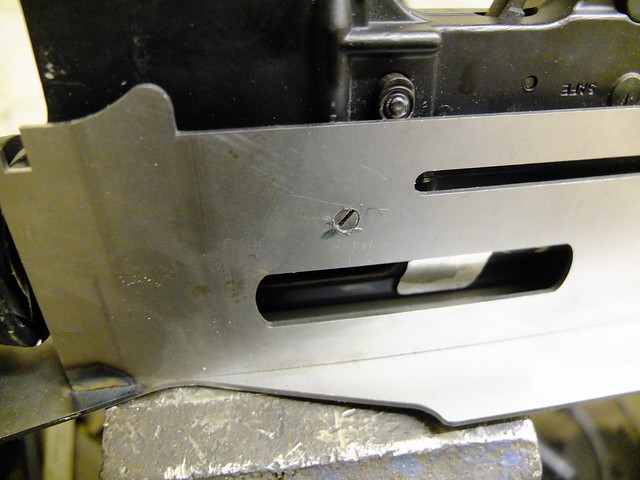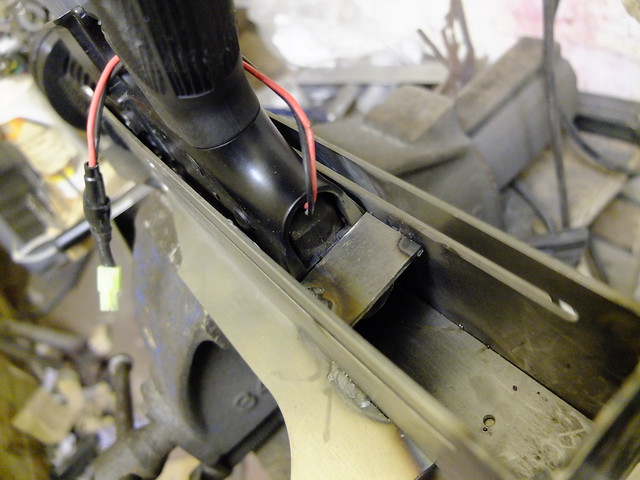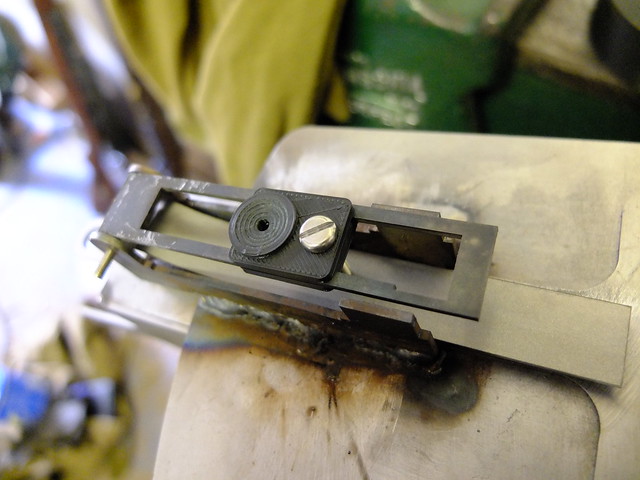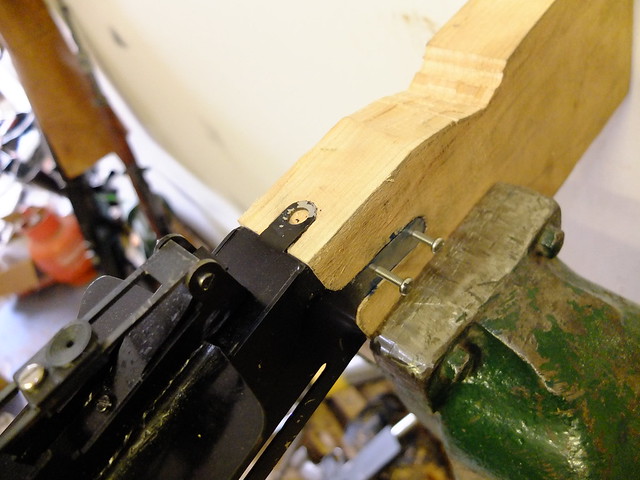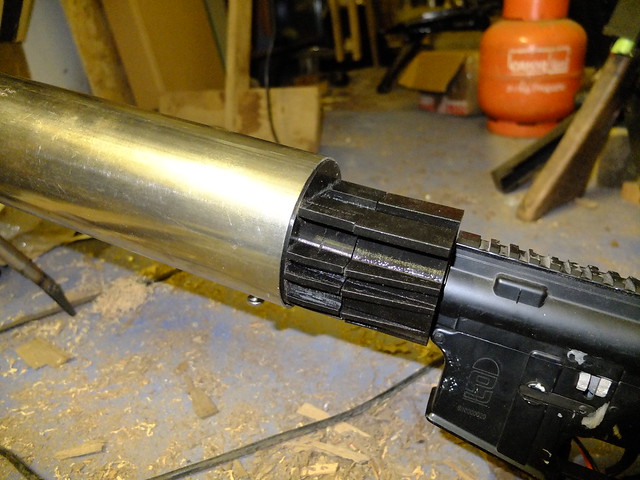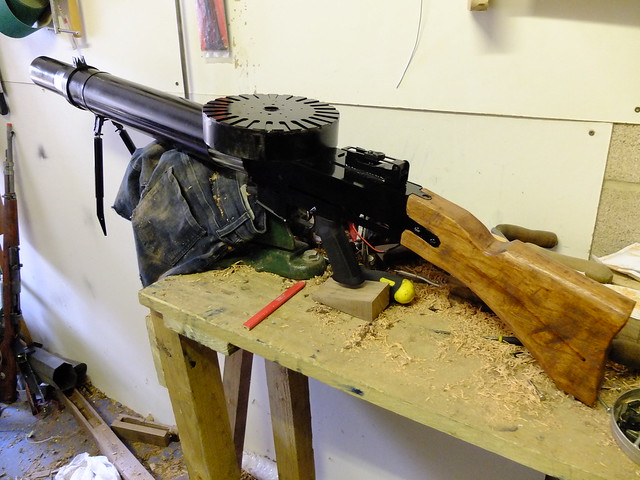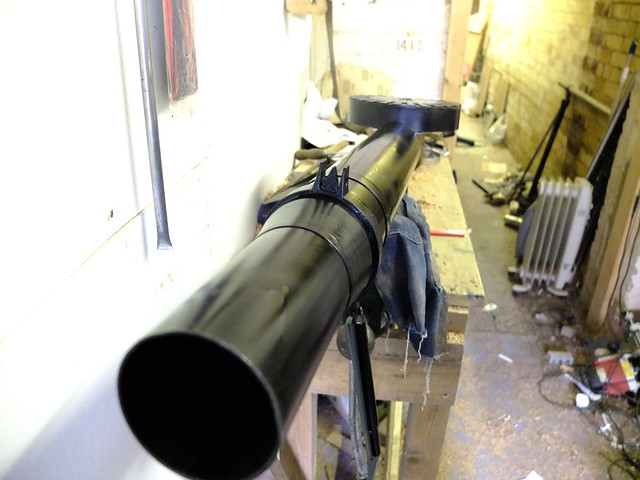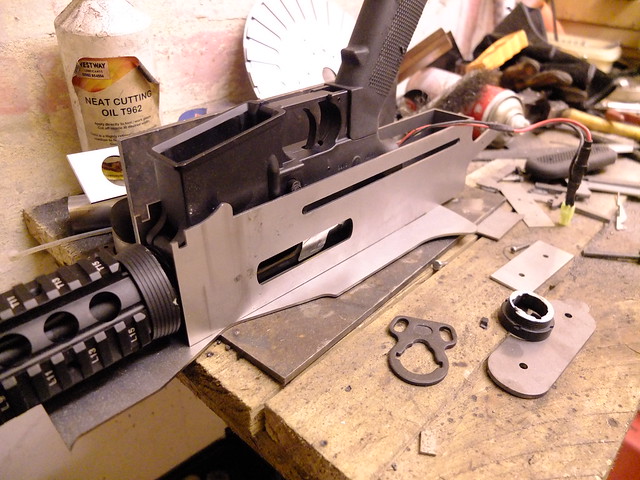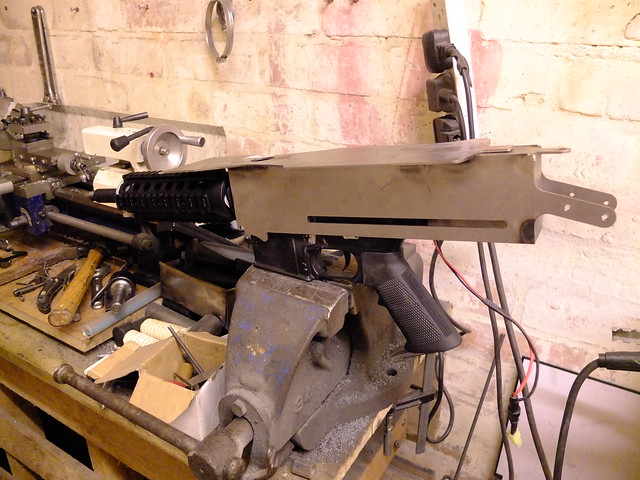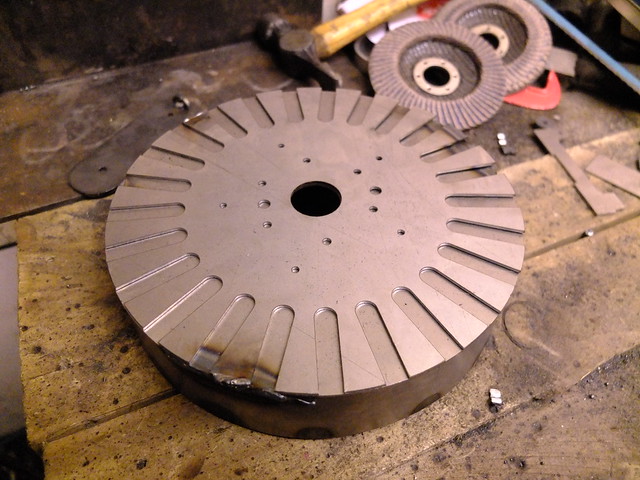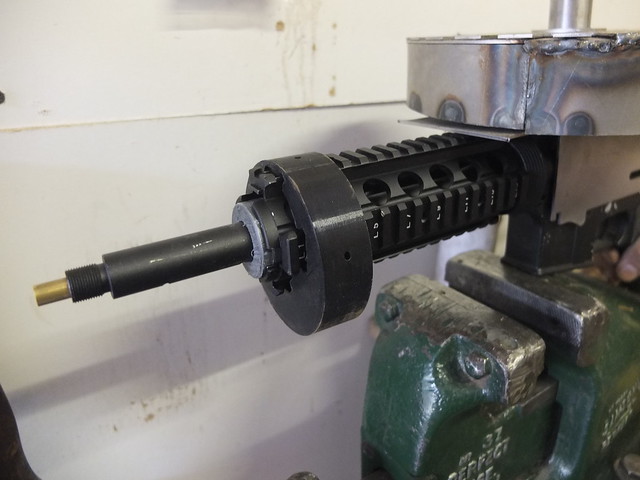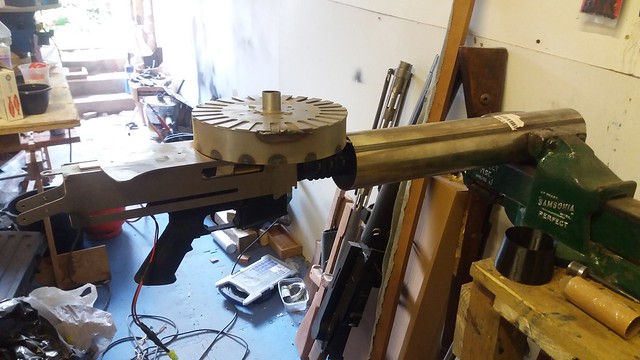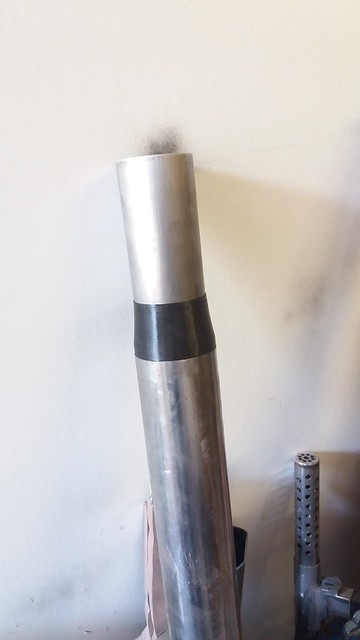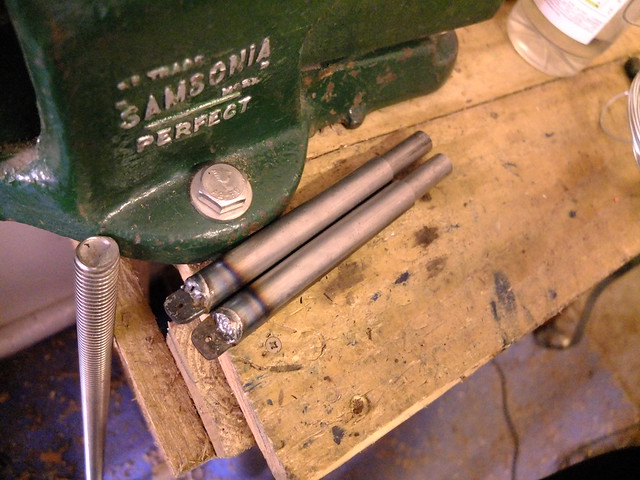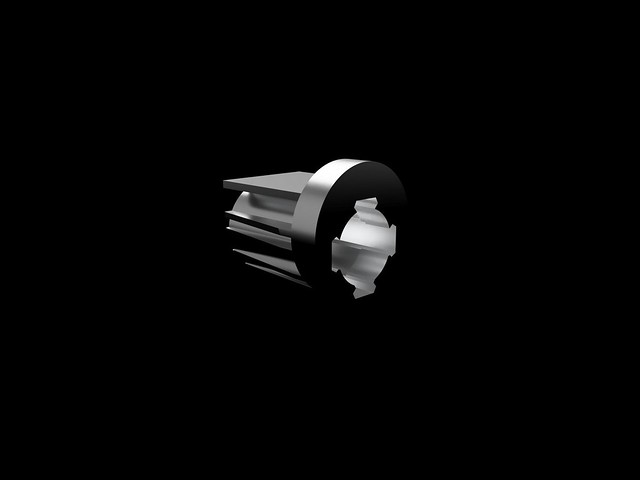At the end of the last build post, I had made the bipod legs but not the bipod itself. I designed the bipod leg mounts and assembled them. I missed out the hinge on the cut list (something has to be missed out, it’s Sod’s law) so had to hand-make them.
The distinctive bands at the front of the Lewis cooling jacket are welded into place. The rear one will also house the bipod unit made previously.
The rear sight block is another piece of laser cut steel, welded into place at the back of the receiver. I’m going to braze together the sight leaf itself together and use a 3D printed aperture to give elevation adjustment. (P.S.: Yes to other welders this weld is obviously pretty dire, I literally ran out of gas on this seam, I’ll clean it up).
The donor is held in by two screws pinching it from either side…
And a plate that will be welded into place at the back that holds under the buffer tube mount on the AEG.
I brazed together the parts for the rear sight leaf. The aperture is adjustable and is based on an ‘upgrade’ Lewis sight that gave a clearer field of view in low light conditions. The flat spring underneath locks it into upright or stowed positions.
The foresight is also 3D printed, this was by far the simplest way to get the weird shapes around that front post. This is secured by a screw and will be painted up to match the rest.
The buttstock is quite a simple one, secured by machine screws running through from one securing tang to the other. Once shaped it will be stained and finished with hardwax oil.
At the front end, the 3D printed cooling fins have arrived. They fit well, once painted up they will serve very nicely for the detailing purpose they are designed for.
Painting up and assembly under way, I have to touch up a couple of areas previously missed.
Once painted up, you can appreciate the sinister, gaping mouth of the cooling jacket.
Finished photos to follow!
If you are interested in the history of the Lewis, you can check out the introduction article here.
If you like this project or have an idea of your own, drop us a line on enquiries.vintageairsoft@gmail.com to discuss. ‘Like’ our Facebook page or follow the blog to get regular updates on projects and interesting videos and articles.
Don’t forget you can buy our complete products via Etsy.

